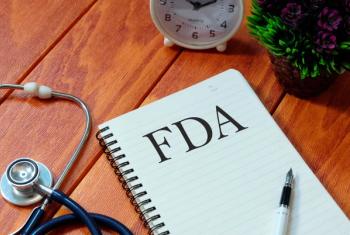
Mild Apnea Leads to PAP Non-Compliance
DETROIT -- Patients with mild symptoms of sleep apnea are less likely to follow treatment plans using a positive airway pressure machine (PAP), found researchers here.
DETROIT, Jan. 18 -- Patients with mild symptoms of obstructive sleep apnea are less likely to follow treatment plans using a positive airway pressure machine (PAP), found researchers here.
One implication is that physicians should closely monitor such patients to ensure they are adhering to therapy, according to Ho-Sheng Lin, M.D., of the John D. Dingell VA Medical Center and Wayne State University here.
In a retrospective chart study, aimed at learning the factors that influence adherence to PAP, only low apnea-hypopnea index was significant, Dr. Lin and colleagues reported in the January issue of Archives of Otolaryngology-Head & Neck Surgery.
The finding "may not be surprising," the researchers said, because patients with mild symptoms may not perceive as much of a benefit from the PAP machines as those with a higher AHI.
"However, it is important to point out that despite the lack of perceived benefit by these patients, individuals with mild (obstructive sleep apnea) do receive neurobehavioral benefits as well as cardiopulmonary benefits," they said.
Previous studies, mainly in Europe and Canada, have looked at reasons for PAP non-compliance, Dr. Lin and colleagues said, but their results may not generalize to the U.S. because of differences in health insurance systems and other socioeconomic factors.
For that reason, the research examined the charts of 131 patients who underwent polysomnography at their institution from March 1999 to July 2001, and from March 2003 to December 2003. The PAP delivered was bilevel for 36 evaluable patients, continuous (CPAP) for 87, and unknown for eight.
Among the 131 patients, 48 (37%) were noncompliant, with compliance defined as using PAP for at least four hours per night on 70% of the nights monitored.
The compliance rate of 63% was in the range (46% to 80%) reported by other investigators, Dr. Lin and colleagues said.
The researcher analyzed a range of factors -- including apnea-hypopnea index, age, body mass index, PAP titration pressure, lowest oxygen saturation, sex, tobacco and alcohol use, neck circumference, or Epworth Sleepiness Scale score -- but the only significant correlation (at P=0.004) was between non-compliance and apnea-hypopnea index below 15.
The reasons given for non-compliance included discomfort, facial rash, and claustrophobia because of the mask, as well as nasal congestion, dryness, and eye irritations from the pressurized air.
One limitation of the study was the lack of objective measurement of non-compliance, since the number of hours of PAP use was based on self-reporting.
As well, the sample size was small and many patients were excluded because their medical records were incomplete or because they did not have access to a PAP machine.
Newsletter
Enhance your clinical practice with the Patient Care newsletter, offering the latest evidence-based guidelines, diagnostic insights, and treatment strategies for primary care physicians.















































































































































































































































































